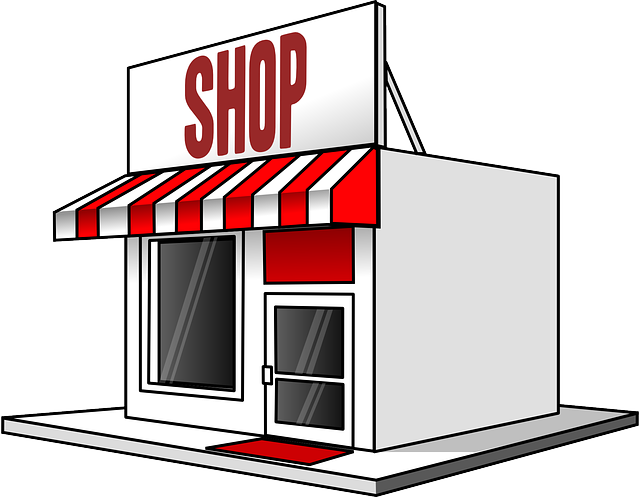Responsive e-commerce store design is essential in the digital era, optimizing user experiences across all devices. Using media queries, flexible layouts, and best practices like hierarchical information architecture, developers create engaging environments that enhance navigation, product discovery, SEO, and conversions. A mobile-first approach, fast loading times, intuitive interfaces, and personalized content are key components, as demonstrated by industry leaders. Trends include AI-powered personalization, AR, sustainability, and voice search optimization. Ultimately, a well-designed responsive e-commerce store drives customer engagement and sales in the competitive online retail landscape.
In today’s digital era, a responsive e-commerce website is not just desirable—it’s essential. With a growing majority of online shoppers using mobile devices, understanding and implementing a mobile-first approach is crucial for business success. This article explores the key components and best practices for building effective, user-friendly e-commerce store designs that adapt seamlessly to any screen size. From media queries enabling dynamic layouts to personalization strategies, we delve into the future trends shaping the optimal ecommerce store design.
Understanding Responsive Design for E-commerce Stores

Responsive design for e-commerce stores is a fundamental aspect in today’s digital landscape. It ensures that your online retail space adapts seamlessly to various devices, from desktops to tablets and smartphones. This approach isn’t just about aesthetic flexibility; it significantly enhances user experience, crucial for retaining customers and driving sales. By employing media queries and flexible layouts, web developers create an optimal viewing experience no matter the screen size.
This adaptability translates into better navigation, easier product discovery, and faster loading times—all vital factors in fostering customer engagement. Moreover, a responsive e-commerce store design improves search engine optimization (SEO), making your site more visible to potential buyers across different platforms. In essence, embracing responsive design is not just a trend but a strategic necessity for any successful online retail venture.
Importance of a Mobile-First Approach

In today’s digital age, where mobile usage far outstrips desktop, a mobile-first approach is no longer a luxury but an essential component for any successful ecommerce store design. This strategy ensures that your website prioritizes the user experience on smaller screens, recognizing that a significant portion of shoppers now access stores via smartphones and tablets. By adopting this method, you’re essentially putting yourself in the shoes of your customers, understanding their needs and expectations when browsing or purchasing from a mobile device.
A mobile-first approach translates to faster loading times, intuitive navigation, and optimized content presentation on smaller displays. It involves designing with a responsive framework that adapts to different screen sizes, ensuring your ecommerce store remains functional and visually appealing across various devices. This is crucial for maintaining customer satisfaction, reducing bounce rates, and encouraging conversions, ultimately driving business growth in an increasingly mobile-centric online marketplace.
Key Components of an Effective Responsive E-commerce Site

A responsive e-commerce site is seamless, user-friendly, and optimized for all devices, from desktops to smartphones. Key components ensure a robust online shopping experience. Firstly, ecommerce store design should prioritize a clean, intuitive layout with clear product categorization and easy navigation. Mobile menus that collapse, hamburger icons, and touch-optimised buttons facilitate browsing on smaller screens.
Secondly, high-quality images, zoom functions, and detailed product descriptions become paramount when users cannot physically examine products. Adaptive imagery ensures optimal display across devices while clear, concise information builds trust and encourages conversions. Fast loading times, secure checkout processes, and consistent branding further solidify a responsive e-commerce site’s effectiveness.
Best Practices for Optimizing User Experience on Different Devices

When designing an e-commerce store, prioritizing user experience across various devices is paramount. A responsive e-commerce website adapts seamlessly to different screen sizes and resolutions, ensuring a consistent and intuitive shopping journey for all users. Best practices include optimizing images for faster loading times on mobile devices, implementing touch-friendly interfaces with large buttons and clear navigation menus, and ensuring the website is fully functional without a mouse, catering to those using only their fingers or thumbs.
Additionally, it’s crucial to consider hierarchical information architecture and efficient content delivery networks (CDNs). Organizing product categories and pages logically aids users in quickly finding desired items. CDNs further enhance performance by serving website content from geographically closer servers, reducing latency and improving overall page load times. These strategies collectively contribute to a seamless and enjoyable user experience, fostering customer satisfaction and boosting conversion rates for any ecommerce store design.
Role of Media Queries in Creating Dynamic Layouts

Media queries play a pivotal role in crafting dynamic layouts for e-commerce store designs, enabling them to adapt gracefully across various devices and screen sizes. By utilizing CSS media queries, developers can apply unique style rules based on the characteristics of the user’s device, such as width, height, orientation, and resolution. This ensures that every element on an e-commerce website, from product images to navigation menus, is optimized for optimal viewing experience regardless of whether it’s accessed on a smartphone, tablet, or desktop computer.
Through media queries, ecommerce store designs can shift layouts, adjust font sizes, change image dimensions, and even rearrange content hierarchically to suit smaller screens. This responsiveness not only enhances accessibility but also significantly boosts user engagement by reducing friction points like tiny buttons or illegible text on mobile devices. The end result is a seamless, intuitive shopping experience that encourages conversions and fosters customer satisfaction across the entire spectrum of digital platforms.
Adaptive Images: Ensuring Fast Loading Times Across Screens

Responsive e-commerce websites are designed to adapt seamlessly across various devices and screen sizes, providing an optimal shopping experience for all users. A key component in achieving this responsiveness is the implementation of adaptive images. By using advanced image optimization techniques, such as lazy loading, dynamic resizing, and format selection based on device capabilities, ecommerce store designs can significantly reduce page load times.
This ensures that customers browsing a mobile phone or tablet don’t have to wait for large, high-resolution images to load, resulting in faster navigation and improved user experience. Adaptive images also help maintain the overall performance of the site, which is crucial for retaining visitors and encouraging conversions. In today’s fast-paced digital landscape, where users expect instant gratification, quick loading times are a critical aspect of successful ecommerce store design.
Personalization and Responsive Design Strategies

Personalization has become a key differentiator in e-commerce, and responsive design plays a pivotal role in achieving this. An ecommerce store design that adapts seamlessly to various devices and screen sizes allows businesses to deliver a tailored customer experience. By leveraging data-driven insights, brands can personalize content, product recommendations, and offers based on individual user behavior and preferences. This not only enhances engagement but also drives conversions.
Responsive strategies such as flexible layouts, media queries, and dynamic content loading ensure that the ecommerce store appears flawless and functions optimally across desktops, tablets, and mobile phones. This adaptability is crucial in today’s digital landscape where customers expect seamless shopping experiences regardless of their device. Personalized and responsive design strategies work hand-in-hand to create a cohesive user journey, fostering brand loyalty and increasing sales.
Case Studies: Successful Responsive E-commerce Implementations

Many successful e-commerce businesses have demonstrated that a responsive design is key to their online success. By ensuring their website seamlessly adapts to any device, they’ve created seamless shopping experiences for all users. For instance, case studies show that companies like Amazon and Etsy have implemented responsive ecommerce store designs that allow customers to browse and purchase items effortlessly on desktops, tablets, and smartphones alike.
These platforms prioritize fast loading times, intuitive navigation, and easy checkout processes across devices. This approach not only boosts customer satisfaction but also drives conversions by encouraging users to make purchases spontaneously. By analyzing these successful implementations, aspiring e-commerce entrepreneurs can gain valuable insights into creating user-centric, responsive ecommerce store designs that thrive in the digital marketplace.
Future Trends Shaping Responsive E-commerce Store Design

As we move further into the digital age, several future trends are shaping the landscape of responsive e-commerce store design. One prominent trend is the increasing emphasis on personalized shopping experiences. Advanced AI and machine learning algorithms enable stores to offer tailored product recommendations based on user behavior and preferences, enhancing customer satisfaction and conversion rates. Additionally, there’s a growing demand for immersive experiences, such as augmented reality (AR) features that allow shoppers to virtually try on products or view them in their spaces before making a purchase.
Sustainability is another significant trend influencing e-commerce design. Consumers are becoming more environmentally conscious, and brands are responding by adopting eco-friendly practices in their operations and packaging. Responsive designs should incorporate sustainable elements like biodegradable materials, transparent supply chains, and clear information about products’ environmental impact to appeal to this growing customer base. Moreover, the integration of voice search technology and smart speakers is on the rise, requiring e-commerce stores to optimize for these new user interactions, ensuring accessibility and convenience.
